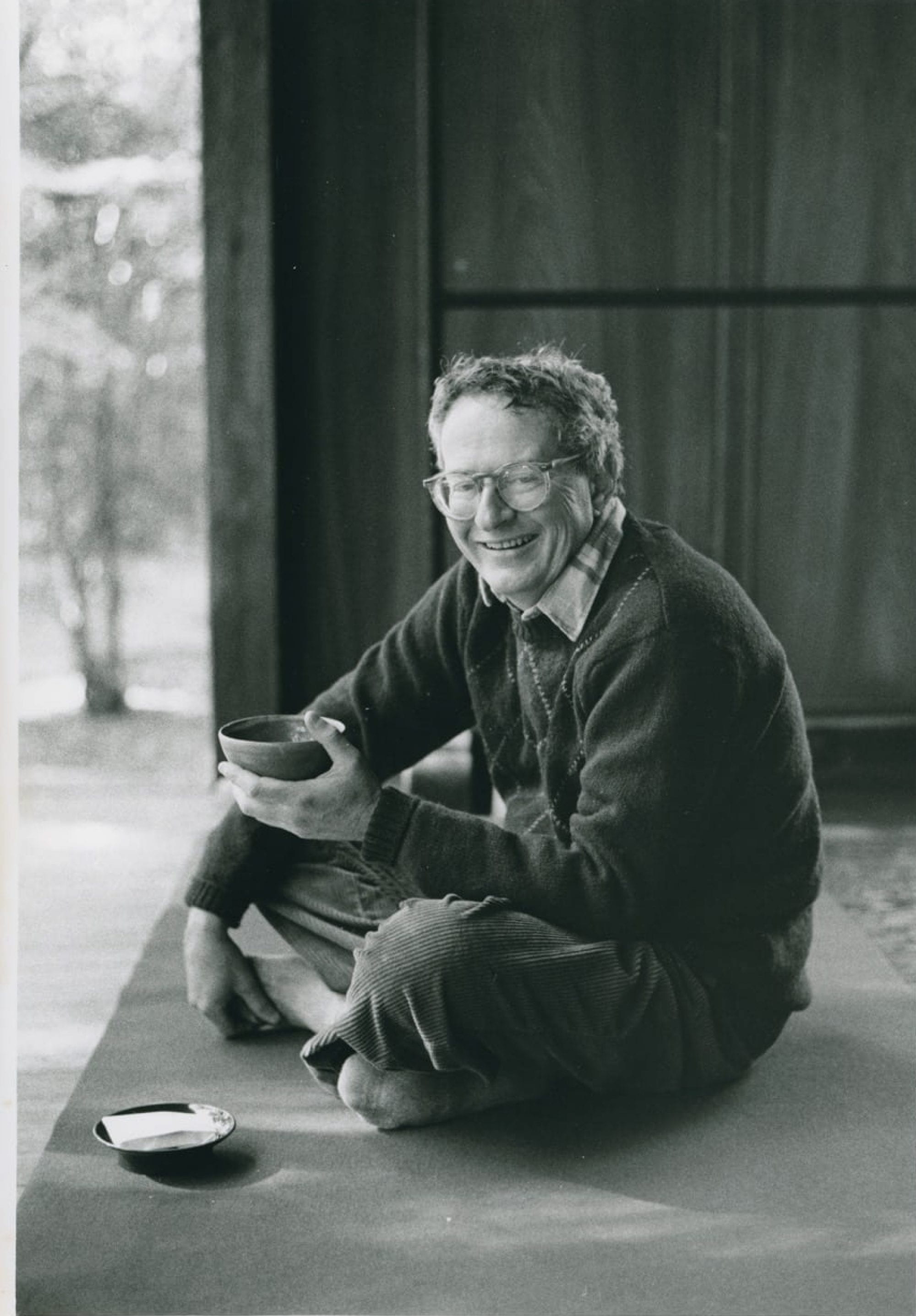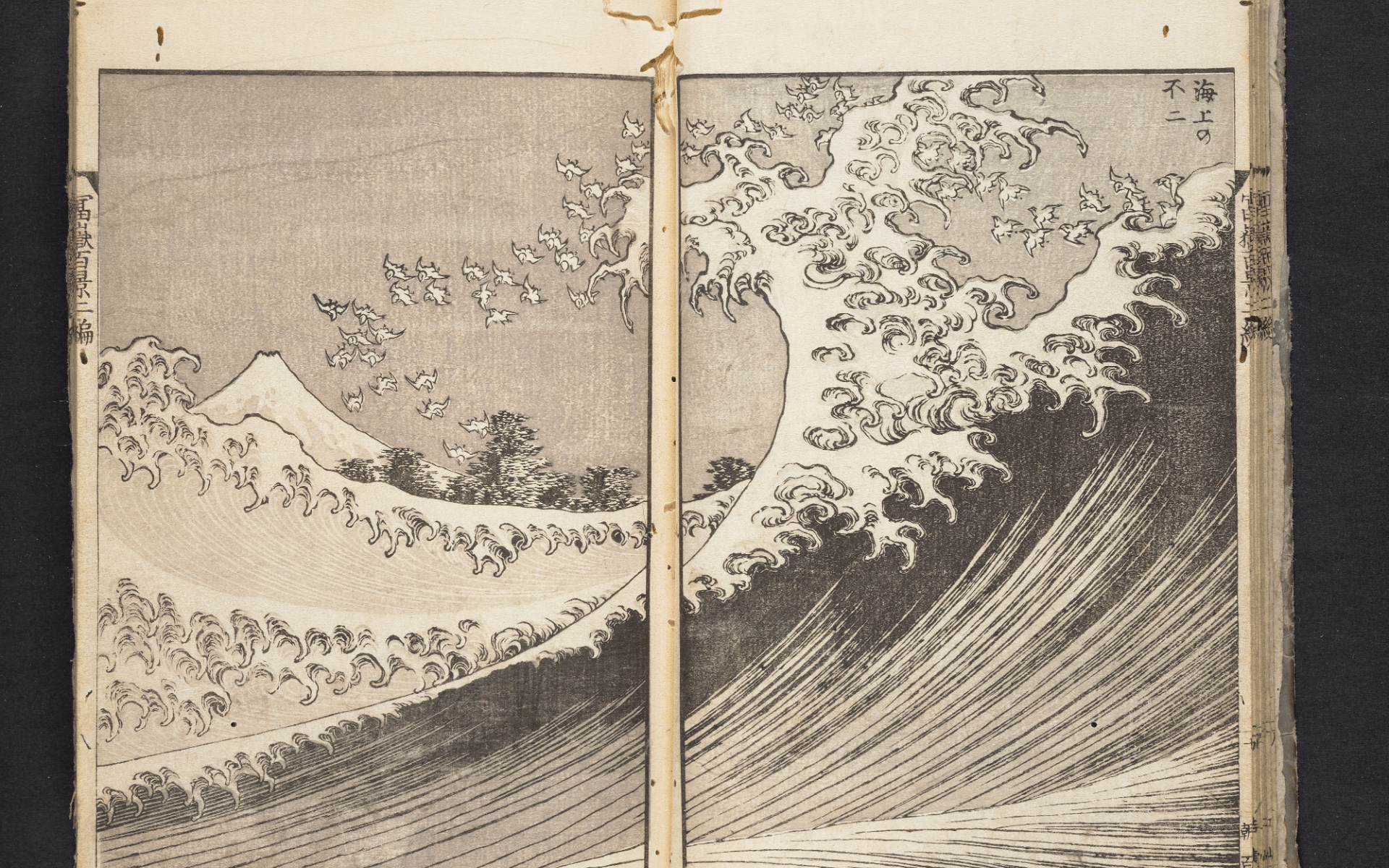
“Fuji with Seven Bridges in One View” (vol. 2, no. 13)
Artist: Katsushika Hokusai葛飾北斎 (Japanese, 1760-1849)
Title: One Hundred Views of Mount Fuji, vol. 1-2 (lacking vol.3)
Date: Woodblock of vol. 1 carved in 1834 (Tenpō 5); vol. 2 in 1835 (Tenpō 6); vol. 3 in the late 1840s
Medium: Monochrome woodblock print; ink on paper
Publisher: Eirakuya Tōshirō 永楽屋東四郎 (Nagoya)
Arthur Tress Collection, Box 16, Item 6
https://franklin.library.upenn.edu/catalog/FRANKLIN_9977502570703681
“Fuji and Ascending Dragon” (vol. 2, no. 4)
Artist: Katsushika Hokusai葛飾北斎 (Japanese, 1760-1849)
Title: One Hundred Views of Mount Fuji, vol. 1-3
Date: Woodblock of vol. 1 carved in 1834 (Tenpō 5); vol. 2 in 1835 (Tenpō 6); vol. 3 in the late 1840s
Medium: Monochrome woodblock print; ink on paper
Publisher: [no publisher identified in the book]
Arthur Tress Collection, Box 10, Item 7
https://franklin.library.upenn.edu/catalog/FRANKLIN_9977502567203681
See digital images
Fugaku hyakkei, “One Hundred Views of Mount Fuji,” is an album of delightful, monochromatic illustrations of the national landmark and the eternal peak, Mount Fuji, from different vantage points and in a wide range of scenes. Some depict Mount Fuji in the distance as the backdrop while in the foreground people are preoccupied with working or pleasure, or while travelers and pilgrims make journeys to celebrated scenic spots or religious sites. Others situate the sacred peak in imaginary or aesthetically imaginative scenes, for example, the crouching dragon swiftly ascending with the current of cloud toward the sublime summit, or the mountain delineated in a reverse image suggesting its reflection in a watery expanse.
Totaling 102 views in three separate volumes, Fugaku hyakkei was designed and launched after the splendid series of single-sheet color prints, Thirty-Six Views of Mount Fuji 富嶽三十六景 (1830-32), Hokusai’s most famous landscape prints. Although some views in the print series and illustrated book seem closely related in terms of motif and composition, Hokusai expanded his engagement with the mountain to show it in a range of imaginative views.
In the nineteenth century, more people were traveling in Japan and this contributed to the production of landscape prints and guidebooks. In these two impressions of Fugaku hyakkei in the Tress collection, marks and sketches are left on many pages, and the evidence of page-turning is also very clear, suggesting that earlier owners looked at them frequently, perhaps even taking them along their journeys.
Fugaku hyakkei, because of its enduring popularity and high demand, was reissued more than nine times with its original blocks, which leads to difficulty in dating the extant impressions.[1] According to the prefaces in the first two volumes, the woodblock for the first volume was carved in Tenpō 5 (1834) and the second in Tenpō 6 (1835), when the first editions were printed by Seirindō成鄰堂 in Edo. The woodblock of the third volume was carved in the late 1840s, and by that time Hokusai was almost ninety years old, as the preface claims. The third volume was first published by Eirakuya Tōshirō 永楽屋東四郎, who also bought the woodblocks for the first two volumes and reissued them with the new volume from his shop called the Tōhekidō 東壁堂 in Nagoya. In the following three decades, Eirakuya published at least three more editions. These two impressions in the Tress Collection includes advertisements for Tōhekidō on the inside back covers; this suggests that either the printings were rebound with these advertisements or published by Eirakuya. However, this history of the printings cannot be confirmed at this time and will require additional research.
Other Impressions
The Gerhard Pulverer Collection, Freer Gallery of Art, Washington D.C (Vol. 1-3)
Library of Freer and Sackler Galleries of Asian Art, Washington D.C (Vol. 1-3)
The Metropolitan Museum of Art, New York, NY (Vol. 1-3)
The New York Public Library, New York, NY (Vol. 1-3)
Harvard Art Museum, Cambridge, MA (Vol. 1-3)
Selected Reading
Earhart, H. Byron. Mount Fuji: Icon of Japan. Columbia: University of South Carolina Press, 2015.
Smith, Henry. Introduction to Hokusai: One Hundred Views of Mount Fuji, 7-24. London: Thames and Hudson Ltd., 1988.
Woodson, Yoko. “Hokusai and Hiroshige: Landscape Prints of the Ukiyo-e School.” In Hokusai and Hiroshige, San Francisco: the Asian Art Museum, 1998.
Posted by Aria Yirou Diao, October 8, 2019
[1] Henry Smith, Introduction to Hokusai: One Hundred Views of Mount Fuji (London: Thames and Hudson Ltd., 1988), 21.


